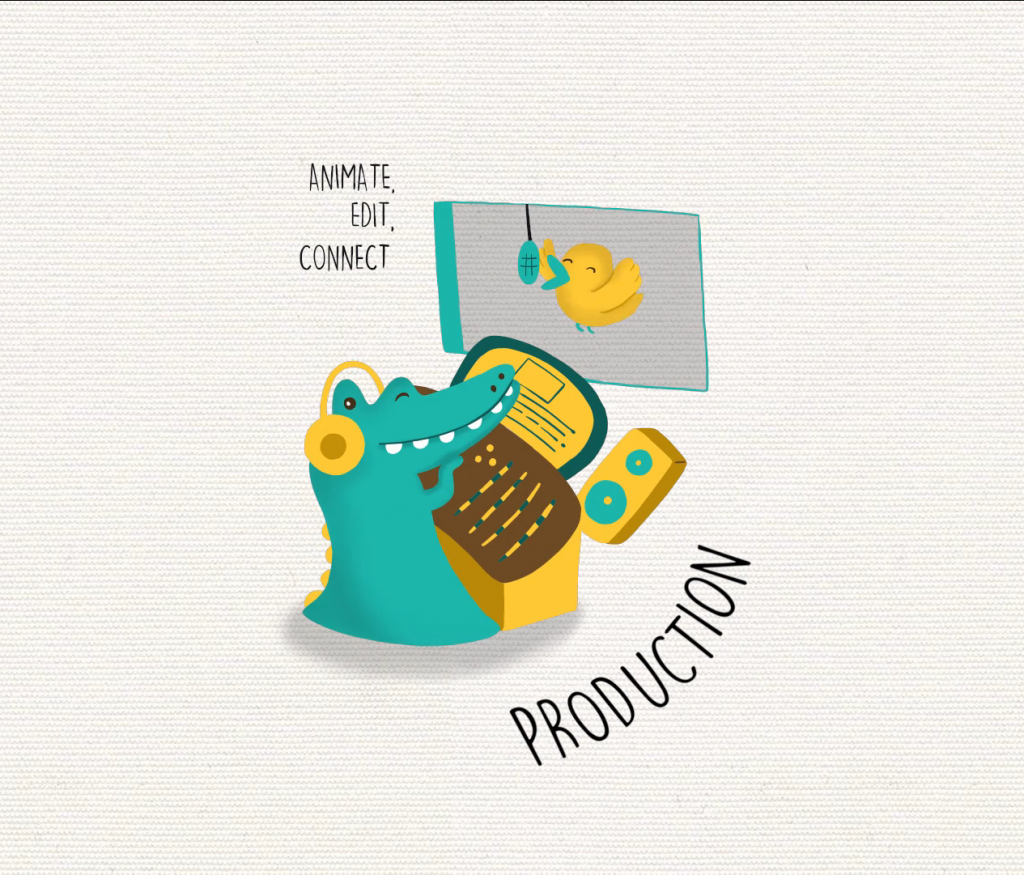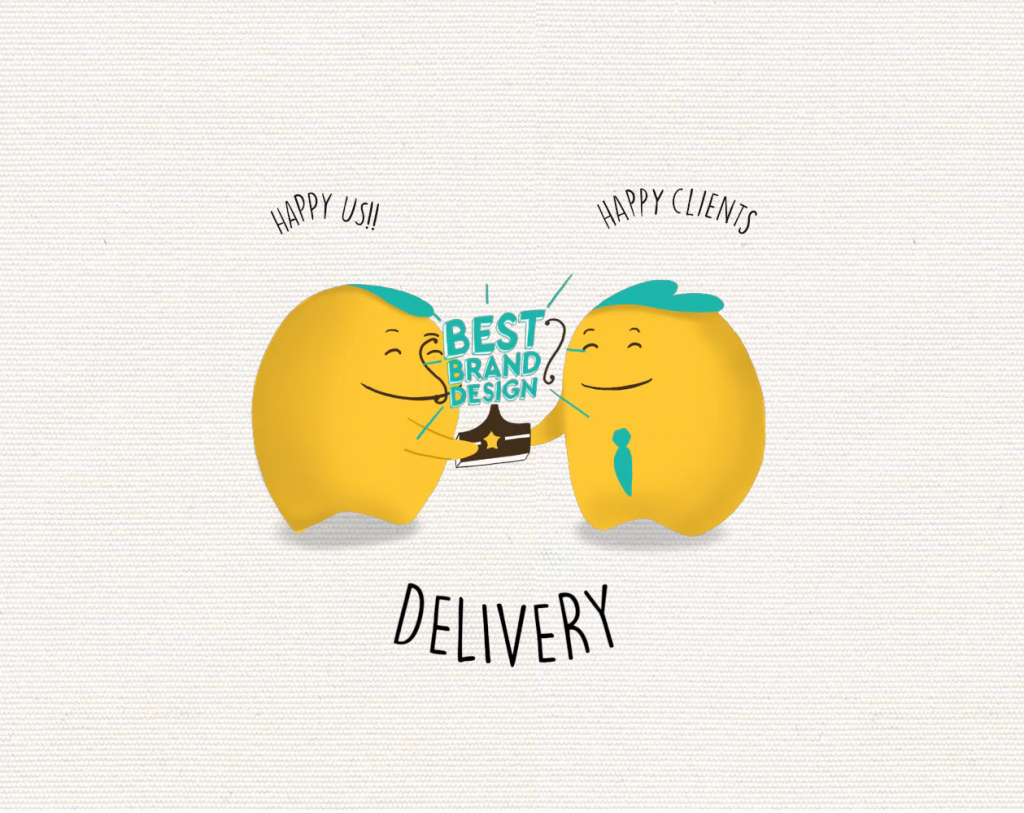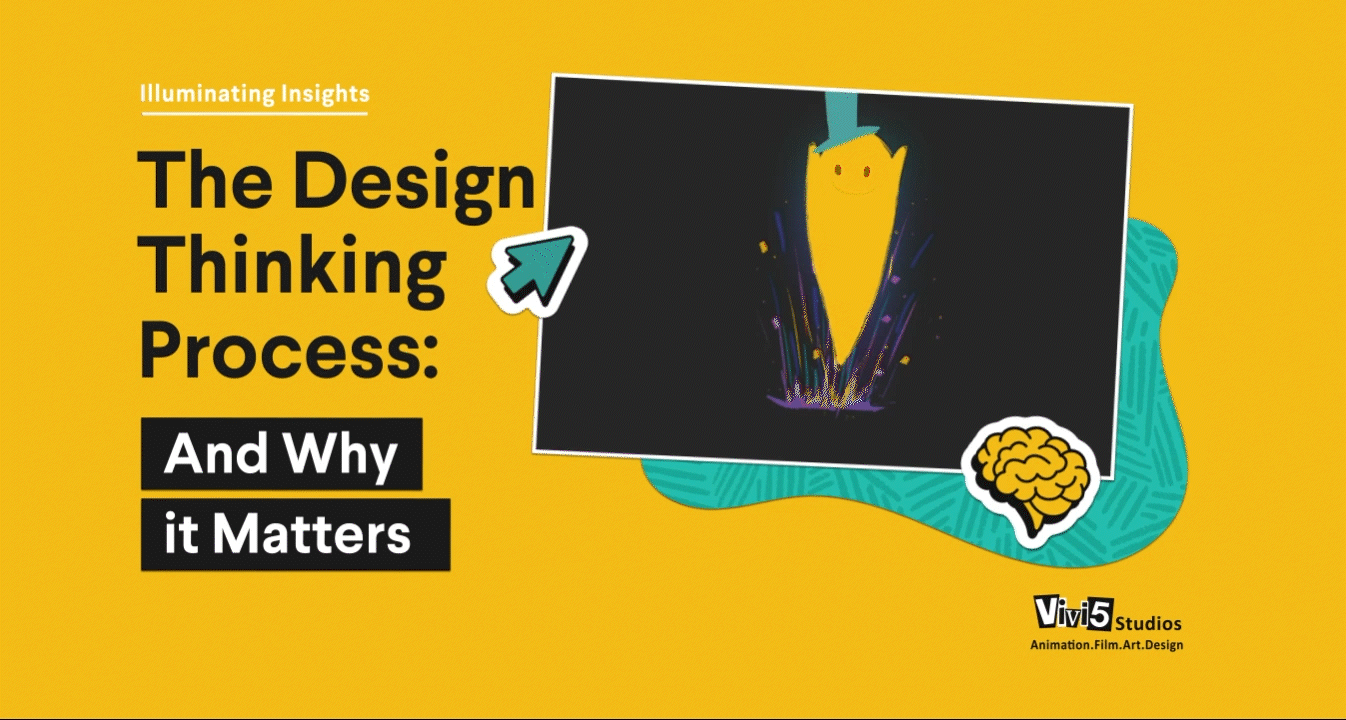It’s not ‘us versus them’ or even ‘us on behalf of them.’
For a design thinker, it has to be ‘us with them.
– Tim Brown, CEO and President of IDEO
We live in an age where innovation and creativity are the principles of every business solution. While innovation can be a product, process, service, or business model, to compete successfully in the cutthroat world of marketing, its main purpose remains its novelty and usefulness.
Harvard Business School defines design thinking as an approach to problem-solving and creativity that is anchored in human-centered design. This ideation process focuses on the solution to a problem instead of the problem itself. After all, there is no novelty in creation if it cannot be used by the people it is created for.
Keeping the above in mind, Vivi5 offers a unique and simple design thinking methodology to cater to brands’ visions and needs.
The process, however simple, follows a step-by-step routine to deliver the maximum.
Listen> Identity> Visualise> Ideate > Design > Produce > Deliver

Understanding the Brief
The first step of every solution is to understand and research the problem at hand. Vivi5 does this by asking a few basic, yet crucial questions –
Who is the client?
What do they stand for?
What products do they offer?
An open discussion with the client then aids the team in understanding the brand’s objectives, and basic mindset, and clears lingering doubts. Here, creative personnel must be allowed to take the helm and speak their mind to provide the most appropriate design solution.

Creating Concepts
While penning down the brief, it is important to understand who the product/service is for. The next step in the process is to identify. A brainstorming session holds a special place in any creative thinker’s methodology to identify its target audience. A creative concept is developed only after the client’s product is portrayed as the hero while emotionally creating a relationship with its potential users through a story.
Vivi5 emphasizes creating an overall campaign insight, tagline, and concept encompassing all of the above. Finally, the deck is presented to the client over a simple call. Perhaps, it can be thought of as a step that provides life to a client’s story.

Pre-Production
Vivi5 follows certain steps and procedures to present a creative marketing strategy that is rich in its narration and presentation. These processes follow the pre-production rituals of visualizing, ideating, and designing.
a. The first and foremost part of this step is to create good storytelling.
Once the client has approved a certain idea or concept, the pre-production process begins with the creation of content. The hero of any good story is its script and characters that can connect to its target audience.
For scripts, the team mulls over the story that has been created and further designs a narrative script that makes this story flow. Further on, a visualization of this narration is penned with multiple visual and graphic references to give the narration its fundamental base.
For static ads, texts play a crucial role in connecting the narration. This is done by writing individual concepts and smart creative copies.
At the end of this step, the client is suggested certain treatment styles to set the mood of the visuals and tone of the script.

b. Once the main ingredients of the content have been developed, the next step is to add the spices. This is done by sketching the concept.
For scripts, the process follows a frame-by-frame storyboard that helps the designers understand how the visuals, and framing of each shot impact the story.
For a static ad, this process is accompanied by the sketching of visuals and placing of the right copy to visualize the layout. This step is crucial to understand the emotions attached to the fundamental idea.
c. Creating an Animatic-
The concluding step of pre-production is to bring the storyboard to life. Once the storyboard is finalised the team moves to creating an animatic. Here, a rough animation is fashioned to make the shots and frames flow one after the other. It is important to fixate and maintain the timing of each frame, choose apt music, and add a scratch V/O within it.
This step may seem like the final deal or an amalgamation of the other steps. Yet, this animatic is a fetus that can give a sneak peek to the client of what to expect, and what is brought to life.

Production
Now coming to the brass tacks – the most important step of all, the production and delivery of the end product.
For a film, special attention to style frames using multiple visual treatments helps in giving it a final look and feel. As the film follows a plot, these visual treatments give lives and personalities to the characters, render their importance in a specific context through background and foreground, and bring about a bit of fantasy to reality through props and art.
The approval of the above by the client pushes the production process into the merging of the whole – backgrounds, characters, and animation, keeping animatic as a base.
For static ads or GIFs, the creative production process often follows the modeling of individual assets within the frames. And if animation is required as part of the look and feel of a GIF, then it follows the same steps as it would for an ad film.
The process for a successful status ad often ends here when the client approves and feels that the ad brings out the voice of the brand itself.
Music
However, for an ad film, the process is beyond completion. No amount of art and animation is enough for a film if it doesn’t have the right music carrying it together.
For Vivi5, the proceedings for this step are written in stone. After the completion of the film, it is taken to a sound studio where music and sound effects are tailored to bring out underlying emotions.
This last stage dictates the emotional touch and brings out the vibe of the film. Read more about how music can be used perfectly in a film, here.

In our previous articles, we have often emphasized the importance of free thinking in a creative space. While trial and error is a good way to experiment, in a business space, this can be time-consuming, expensive, and ultimately ineffective. Thus, design thinking offers a more defined process that enables strategic innovation.
Although each of the above steps helps compartmentalize the priorities while creating an ad campaign, it is up to the artists to take creative liberties to make the art and story stand out of the box. Design thinking remains one of the many problem-solving approaches to innovation. Understanding the tools at hand can help chart one’s course to deliver what users and customers truly need and desire.

Written by Adyasha





